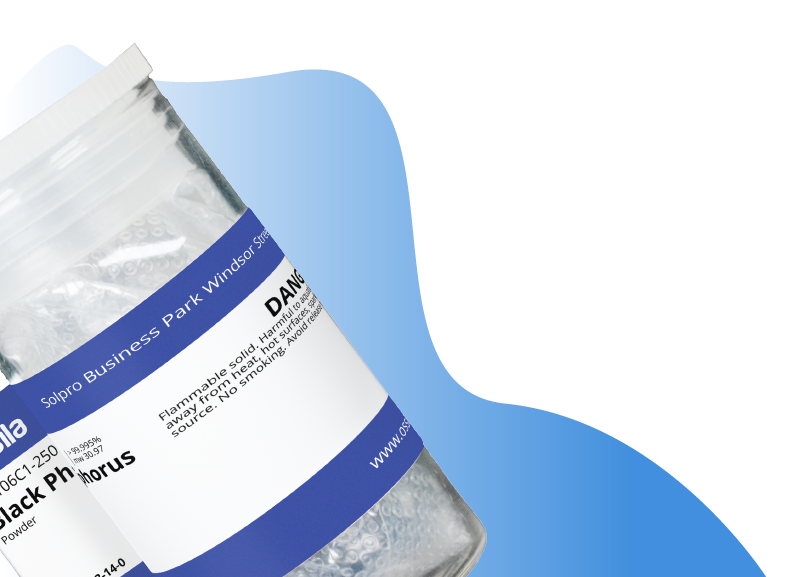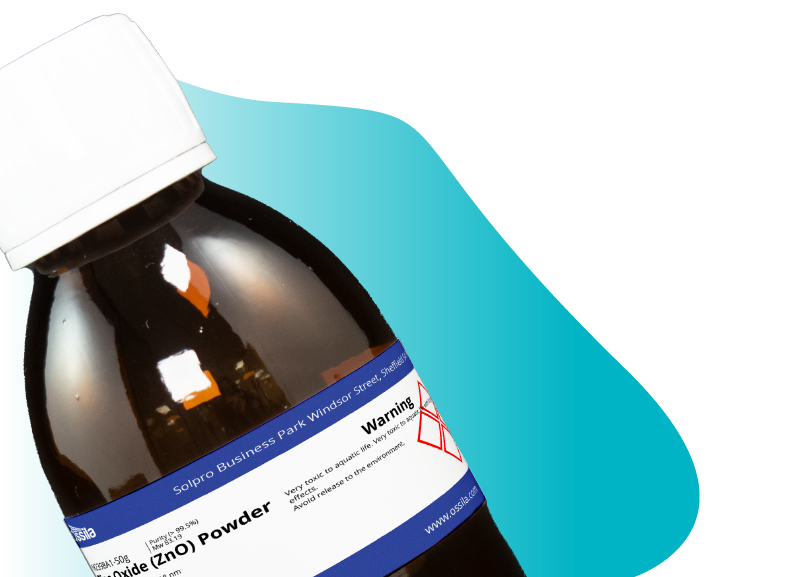Bismuth Oxide (Bi2O3) Nanopowder
CAS Number 1304-76-3
2D Materials, Advanced Ceramic Materials, Anode Active Materials, Battery Materials, Inorganic Electronic Materials, Low Dimensional Materials,Bismuth trioxide (Bi2O3) Nanoparticles, 75-195 nm, >99.99% purity, monoclinic phase
High purity bismuth trioxide (α-Bi2O3) powder for applications in sensors, optical coatings, and anode materials for LIBs
Technical Data | MSDS | Literature and Reviews | Related Products | Technical Support
Bismuth trioxide (Bi2O3, CAS number 1304-76-3) is renowned for its stability, low toxicity and photocatalytic performance. Bi2O3 has six polymorph modifications, known as α-, β-, γ-, δ-, ω- and ε-Bi2O3. The monoclinic form α phase of ambient temperature and the δ phase of high temperature are both structurally stable. At a temperature higher than 710 °C, α phase is converted into the cubic δ phase that has a defective structure with random oxygen vacancies. At 300 K, the band gap of monoclinic α-Bi2O3 is equal to 2.85 eV, while that of tetragonal β-phase is 2.58 eV.
The other bismuth trioxide polymorphs are high-temperature metastable phases. Each polymorph possesses distinct crystalline structures and physical properties. γ-Bi2O3 phase, having the sillenite structure, is optically active in electro-optic devices.
High Purity
High purity > 99.99%
Worldwide shipping
Quick and reliable shipping
Low price
Low price bismuth oxide (Bi2O3)
Versatile
Applications in sensors, optical coatings, and anodes
Bi2O3 shows great potential as anode materials for lithium-ion batteries (LIBs), owing to its high theoretical capacity of 690 mA h g−1. Furthermore, CQD−Bi2O3 composite exhibited good electrochemical activity and delivered a discharge capacity as high as 1500 mA h g−1 at 0.2 C rate. The supercapacitor properties of the CQD−Bi2O3 composite electrode revealed good reversibility and a high specific capacity of 343 C g−1 at 0.5 A g−1 in 3 M KOH. The asymmetric device using the CQD−Bi2O3 and reduced graphene oxide as the binary anode materials delivered a maximum energy density of 88 Wh kg−1 at a power density of 2799 W kg−1, while the power density reached a highest value of 8400 W kg−1 at the energy density of 32 Wh kg−1.
With a band gap range of 2.1 - 3.9 eV, bismuth oxide efficiently absorbs visible light for photocatalysis. The oxygen vacancies in its crystal lattice structure, produce reactive oxygen species (ROS), contributing to antibacterial efficacy as well as pollutant degredation.
Technical Data
| CAS Number | 1304-76-3 |
|---|---|
| Chemical Formula | Bi2O3 |
| Molecular Weight | 465.96 g/mol |
| Chemical Name | Bismuth oxide |
| Synonyms | Bismuth Trioxide / Bismuth (III) Oxide, Bismite |
| Classification / Family | 2D semiconducting materials, nanomaterials, Solid lighting, metal oxides |
| Color | Off-white powder |
Bismuth Oxide (Bi2O3) Nanopowder
| Product Code | M2407A1 |
|---|---|
| Average Particle Size (APS) | ~ 130 nm |
| Specific Surface Area (SSA) | 4.0 – 6.0 m2/g |
| Melting Point | 817 °C (lit.) |
| Density | 8.9 g/cm³ |
| Morphology | Spherical |
| Purity | > 99.99% |
Pricing Table
| Product Code | Weight | Price |
|---|---|---|
| M2407A1 | 50 g | £138 |
| M2407A1 | 100 g | £225 |
| M2407A1 | 100 g | £450 |
*For larger orders please email us to discuss prices
MSDS Documents
Bismuth Oxide Nanopowder MSDS Sheet
Literatures
-
A Short Review on Biomedical Applications of Nanostructured Bismuth Oxide and Related Nanomaterials, M. Bartoli et al., Materials, 13(22), 5234 (2020); DOI: 13(22), 5234.
-
The Molecular Structure of Bismuth Oxide by Raman Spectroscopy, D. Franklin et al., J. Solid State Chem., 97, 319-331 (1992); DOI: 10.1016/0022-4596(92)90040-3.
-
Ferroelectricity in layered bismuth oxide down to one nanometer, Q. Yang et al., Science, 379 (6638), 1218-1224 (2023); DOI: 10.1126/science.abm5134.



